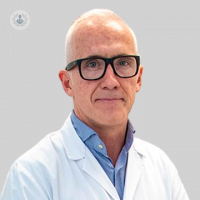4 Key aspects of vertigo and balance problems
Written by:
What are dizziness and balance disorders?
Vertigo and balance disorders are a group of diseases that result from failures that occur at the level of motion sensors that have to level the inner ear and brain level. The set of sensors that allow us to orient in space. The word vertigo, which is the most classic and most characteristic of these diseases form, means to turn because the most common form of crises of vertigo is one in which the patient has a feeling of intense movement, with a sense of rotation it is associated with nausea and vomiting.
What symptoms occur?
As I said, the most common form is vertigo, feeling of rotation. Also usually associate a very important when walking, when moving difficulty, for not having an adequate perception of our location in space, we have some answers in relation to the movements we do, completely abnormal. We have difficulty walking, we are unable to stay on his feet and when it becomes chronic, when the patient has a sustained clinical over time what this limitation persists mainly in performing movements during walking, right, one very important during movements insecurity and risk of falls, above all, it will affect older, very important people.
How they affect the patient?
The degree of involvement that vestibular pathology occurs in the patient is very high. Only he who has suffered ever known to what extent vertigo can alter our quality of life. Fundamentally we lose something that differentiates us from animals, which is our ability to stay in season, when that fails, everything fails. We have two lines of major functional impairment. On the one hand the crises of vertigo, in which the patient does not know if tonight will be able to go to dinner or if next week will be able to go to work normally, because they are crises that appear very abruptly and totally incapacitate a very acute form. On the other hand, we have the limitation that generates chronic instability. Patients who have suffered dizziness recurrently or in some cases chronic disease in balance disorders, produces a sustained chronic residual instability and does have a functional limitation, a limitation on our ability to move that makes us find wrong, persistently over weeks.
What are your treatments? What progress there has been in recent years?
The advances that have occurred in recent years, especially, have been diagnosed level. It is where we have taken very important steps in two respects: first, our diagnostic capacity and, second, in our ability to offload the patient, patient examination, producing the least possible discomfort.
Two teams have revolutionized the way we analyze vertigo, which are computed dynamic posturography is a machine that allows us to analyze how the capacity of the balance of the patient. It is a sophisticated machine, are large machines that require investment in space and equipment very high, but that really allow us to measure that tells us the patient when unstable. When the patient tells us, I have a bad balance, today we can measure. And secondly, the test head impulse that is a technological development that takes under 15 implanted on a regular basis, has analyzed the response speed of the balance system of a perfect way. These two factors allow us today, together with the experience and knowledge of pathology, reach a very safe analysis, very accurate, of what is the condition of the patient.
As for treatment, we are making great progress in surgical techniques that allow us to apply the most appropriate treatment on the inner ear to solve problems, especially in the case of dizzy spells. There is some research to important world probably soon will allow implant placement, as we do in the case of hearing, but for balance of patients. And a line of treatment in Europe and is being implemented on a consolidated basis and in Spain, increasingly, is the fact multidisciplinary teams vestibular rehabilitation. That is, computers that work together ENT specialists, neurologists, physical rehabilitation, physiotherapists, and for recovering the chronic imbalance of the patient in two fundamental branches. On the one hand, patients with vertigo that remain chronic instability and, on the other hand, the chronic instability of the elderly with the risk of falling associated with the risk of fracture and mortality rates so high that they are associated with falls in older people.



